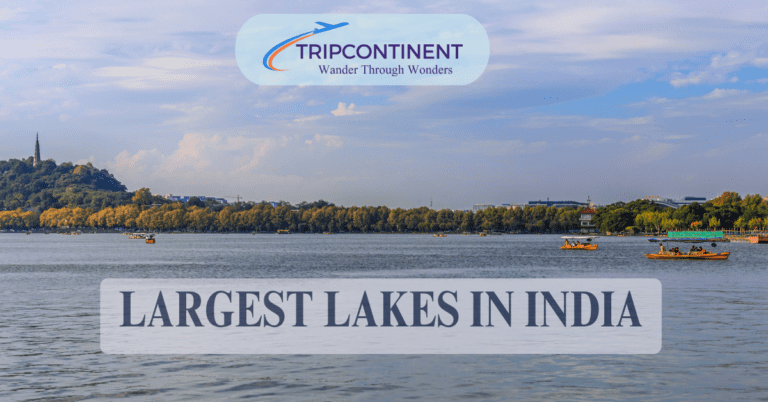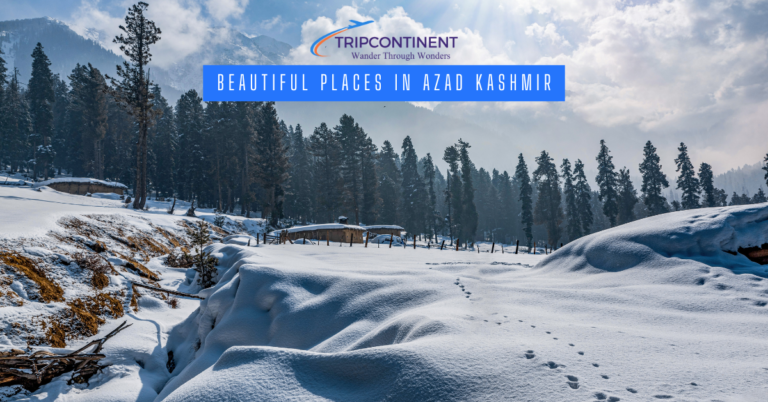12 Coldest Countries in the World You Must Visit Once
Our planet Earth has a remarkable range of climates, from sunny deserts to frigid tundras. While some countries bask in year-round warmth, others endure bitterly cold winters that challenge both the environment and their inhabitants. The most extreme example comes from Antarctica, where the Soviet Vostok station recorded the lowest temperature ever observed—a bone-chilling -128.6°F (-89.2°C) in 1983.
This incredible temperature variation highlights Earth’s diverse nature. Just imagine, in Mali, average temperatures soar to a sweltering 83.89°F (28.83°C), while a mere 3,500 kilometers away, the Swiss bundle up against a frigid 6.1°F winter chill.
Intrigued by these extremes? Let’s explore the coldest countries in the world further. We’ll dig into their average yearly temperatures, uncover fascinating facts about their freezing conditions, and appreciate their unique, frost-bitten beauty.
So, prepare to be amazed as we explore the planet’s coldest corners!
A List of the 12 Coldest Countries in the World
- Greenland
- Russia
- Canada
- Norway
- Mongolia
- Iceland
- Tajikistan
- Sweden
- Finland
- North Korea
- Switzerland
- Kazakhstan
1. Greenland
Greenland, a Danish territory, reigns supreme as one of Earth’s coldest regions. This Arctic land boasts frigid temperatures, sprawling glaciers, and breathtaking landscapes sculpted by ice. Its proximity to the North Pole ensures harsh weather year-round.
Greenland’s winter translates to bone-chilling temperatures, with coastal areas experiencing slightly milder conditions compared to the interior’s punishing cold. The capital, Nuuk, sees typical winter lows of -20°C (-4°F). Venture inland or higher in elevation, and temperatures can fall below -30°C (-22°F).
Greenland’s defining feature is its massive ice sheet, covering a staggering 80% of the island. This colossal sheet, the world’s second-largest, significantly contributes to the region’s overall coldness. Residents have adapted remarkably, with traditions like ice fishing reflecting their connection to the wintery landscape.
Moreover, Greenland has the coldest average yearly temperature globally, at a bone-chilling -17.18°C (1.076°F). The extreme cold presents challenges but also adds to Greenland’s captivating beauty. This allure draws in scientists and explorers eager to witness the pristine wilderness that defines this extraordinary island.
2. Russia
Russia, the world’s most populous country, is synonymous with intensely cold and vast, frozen landscapes. Continental climates dominate much of the nation, with Siberia taking the crown for the coldest experiences. This region’s reputation for teeth-chattering conditions is well-deserved, with temperatures frequently dipping well below zero degrees Celsius. Norilsk, a Siberian city, exemplifies this extreme, with temperatures regularly plummeting below -30°C (-22°F).
Winter in Russia is more than just a season; it’s a powerful force shaping everyday life. The country transforms into a wonderland of snow-covered fields, frozen lakes, and rivers encased in ice. Cities like St. Petersburg and Moscow experience particularly harsh winters, with sub-zero temperatures commonplace for extended periods.
Despite the challenges, Russians have developed a remarkable resilience to their frigid environment. Ice hockey and ice fishing are beloved national pastimes, reflecting the deep integration of winter sports into Russian culture. This enduring spirit in the face of extreme cold is a defining characteristic of the nation and a significant factor in its reputation as a land of icy temperatures.
Russia has one of the coldest average yearly temperatures globally, at -5.16°C (22.71°F), and claims three of the top four lowest temperatures ever recorded outside of Antarctica. Verkhoyansk holds the record for the most extreme readings, with temperatures dropping to a staggering -67.8°C (-90°F) on both February 5th and 7th, 1892. Oymyakon then tied this record on February 6th, 1933, solidifying Russia’s place as a true champion of the cold.
3. Canada
Canada is synonymous with frigid weather, particularly in its northern reaches. Despite having diverse climates, Canada’s harsh winters significantly impact its landscapes and way of life. Cities like Winnipeg, Yellowknife, and the Yukon Territory experience extreme cold, with temperatures frequently dipping well below freezing.
Winter in Canada transforms the nation into a picture-perfect wonderland of snow-covered fields, frozen lakes, and rivers encased in ice. The true champion of the cold is Nunavut, where temperatures of -30°C (-22°F) are a common occurrence.
Canadians have not only adapted to this chilly environment but have thrived in it. Ice hockey, skiing, and snowboarding are national pastimes, reflecting the deep integration of winter sports into Canadian culture. Events like Quebec City’s Winter Carnival further solidify this cultural identity, celebrating the beauty and resilience of Canada’s winters.
For outdoor enthusiasts, Canada’s vast wilderness offers a winter paradise, encompassing the Arctic tundra and the majestic Rocky Mountains. The nation’s chilly reputation is a testament to its ability to transform a harsh environment into a source of national pride and unique cultural experiences. While the record-low temperature of -81.4°F (-63°C) in the Yukon Territory chills the bones, Canada’s average yearly temperature sits at a brisk -5.1°C (22.8°F).
4. Norway
Norway, located in northern Europe, is renowned for its dramatic winter scenery and brisk climate. A predominantly subarctic and boreal climate blankets the nation, with particularly cold temperatures in the north. Tromsø, a city within the Arctic Circle, experiences winter lows that can plummet to -20°C (-4°F).
Winter transforms Norway into a mesmerizing winter wonderland. Breathtaking fjords, glacial lakes, and the captivating dance of the Northern Lights paint an enchanting picture across the snow-covered landscape. Despite the chill, Norwegians embrace outdoor pursuits like skiing, snowboarding, and dog sledding, with a national network of cross-country ski trails and alpine resorts reflecting their passion for winter activities.
While coastal regions like the capital, Oslo, see milder winters with highs ranging from -5°C to -10°C (23°F to 14°F), the northern reaches and mountainous interior experience harsher conditions.
Norway’s chilly environment has become an integral part of its national identity. Communities come together to brave the cold and celebrate traditional winter events like Christmas markets and the winter solstice. Norway’s reputation as a cold country goes beyond its extreme winters; it’s also about its people’s appreciation for the unique beauty of the season.
Similar to other nations bordering the Arctic Circle, Norway boasts a brisk annual average temperature of 1.78°C (35.20°F). While Mongolia experiences scorching summer highs, Norway’s summers are a comfortable sweater-weather affair, averaging around 18.3°C (65°F).
5. Mongolia
Mongolia, famed for its vast, untamed landscapes, endures harsh winters due to its continental climate. Particularly brutal conditions grip the north and west, with Ulaanbaatar, the capital, holding the unenviable title of one of the world’s coldest capital cities, experiencing winter lows of -30°C (-22°F).
Winter transforms Mongolia into a majestic, snow-covered world. Wide steppes and craggy mountains don a blanket of white, while a significant portion of the population, nomadic herders, persevere through these harsh conditions. Their traditional gers (yurts) are relocated during this time to find pastures for their livestock.
The country’s vast size and low population density further amplify the sense of winter isolation. Yet, Mongolians celebrate the season with traditions like Tsagaan Sar, the Lunar New Year, a testament to their resilience and ability to find renewal despite the challenges.
Mongolians’ deep connection with the land is evident in their nomadic way of life, which is specifically adapted to the harsh environment. Ice fairs, alongside age-old competitions like horse racing and wrestling, showcase the remarkable adaptability and resilience of the Mongolian people. Mongolia’s reputation as a frigid nation is intrinsically linked to the enduring spirit of its nomadic culture, which thrives even in the face of brutal winters.
With an average yearly temperature of a brisk 1.78°C (35.20°F), Mongolia joins the ranks of other chilly nations along the Arctic Circle. Unlike Mongolia’s scorching summer highs, Norway, for comparison, experiences sweater-worthy summers averaging around 18.3°C (65°F).
6. Iceland
Iceland, despite its name, isn’t as icy as one might expect. The North Atlantic Drift, a warm current from the Gulf Stream, tempers the climate. However, Iceland is still known for its cool temperatures and unpredictable weather patterns. Reykjavík, the capital, experiences a mild marine climate with winter highs hovering around freezing (30 to 21°F or -1 to -6°C).
Iceland’s breathtaking landscapes, a captivating blend of glaciers, hot springs, and volcanic wonders, help offset the cooler climate. The island’s interior and northern regions tend to be colder, with winter lows occasionally dipping to -10°C (14°F). This chilly backdrop becomes a stage for the awe-inspiring Northern Lights, which dance across the dark winter skies.
Icelandic winters showcase a beautiful contrast, with snow-capped peaks standing guard over geothermal wonders like the Blue Lagoon. Despite the chill, Icelanders embrace the season with warmth, celebrating Christmas traditions and reveling in the winter solstice.
While not the world’s coldest country, Iceland offers a captivating blend of frigid beauty and cultural resilience. Unlike Greenland, the icy moniker “Iceland” holds some truth. This North Atlantic island boasts an average yearly temperature of a brisk 2.31°C (36.15°F). Records show the occasional dip to even frostier extremes, with the lowest temperature ever recorded being a bone-chilling -39.7°C (-39.5°F) in Northern Iceland.
7. Tajikistan
Tajikistan, a mountainous nation bordering Kyrgyzstan, boasts a subtropical climate despite its high altitude. This is because variations in elevation create dramatic temperature differences throughout the country.
The average yearly temperature is a cool 38.75°F (3.75°C). In lower valleys, summers are hot and dry, perfect for hiking and exploring ancient historical sites like the Penjikent ruins. Winters are mild with occasional snowfall, ideal for horseback riding or soaking in natural hot springs.
In contrast, the Pamir Mountains, which dominate the eastern half of Tajikistan, experience much colder temperatures year-round. Here, winter transforms the landscape into a wonderland, perfect for activities like skiing, snowboarding, and snowmobiling.
8. Sweden
Sweden, located in northern Europe, is renowned for its long, cold winters, which are brought on by a predominantly subarctic and boreal climate. Temperatures can fall dramatically, especially in the north, with cities like Kiruna in Lapland experiencing lows of -30°C (-22°F).
Winter transforms Sweden into a wonderland of snow-covered landscapes. Picturesque ski resorts, frozen lakes, and snow-dusted forests create a breathtaking scene across the country. While the interior and northern regions face harsher conditions, the capital, Stockholm, and other southern areas see milder winters, typically ranging from -5°C to -15°C (23°F to 5°F).
Winter festivals, cross-country skiing, and ice skating are integral parts of Swedish life during the colder months. This embrace of winter aligns with the Swedish concept of “lagom,” which emphasizes a balanced and moderate approach to life.
Sweden’s reputation as a cold country is intertwined with its ability to transform winter into a season of stunning beauty, outdoor activities, and cherished traditions that endure despite the harsh Nordic climate. Sweden edges out Finland by a mere 0.17°C (0.3°F), boasting an annual average temperature of 2.62°C (36.71°F). Lapland again takes the crown for the coldest recorded temperature in Sweden, with a bone-chilling -62.7°C (-52.6°C) recorded on February 2nd, 1966.
9. Finland
Finland, situated in northern Europe, is synonymous with cold winters due to its temperate climate with distinct seasons. Winter paints the nation in a blanket of frost and snow, with some of the country’s most extreme chills found in Lapland, Northern Finland, where winter lows can dip below -30°C (-22°F).
Winter transforms Finland into a captivating wonderland. Frozen lakes, snow-laden forests, and the awe-inspiring Northern Lights dancing across the night sky create a breathtaking scene. While the interior and northern regions experience harsher conditions, the capital, Helsinki, sees milder winters, typically ranging from -5°C to -15°C (23°F to 5°F).
Despite the frigid temperatures, Finns welcome winter with enthusiasm. Cross-country skiing, ice fishing, and snowmobiling are just a few of the outdoor activities enjoyed during this season. Winter becomes a time to embody “sisu,” a core Finnish value that translates to perseverance and determination in the face of adversity.
Finland’s iconic winter traditions, from cozy saunas to festive Christmas markets, are all born from the country’s relationship with the cold. Finland holds the title of second-coldest Scandinavian nation, boasting an annual average temperature of 2.52°C (36.54°F). Interestingly, Lapland holds the record for the lowest recorded temperature every month except December, when Eastern Finland reached a bone-chilling -52.6°C (-47.0°C) in 1919.
10. North Korea
Despite its relatively small size, North Korea boasts a surprisingly diverse climate. The national average temperature falls at a brisk 6.19°C (43.14°F), earning it a spot on the list of coldest countries globally. This coolness is attributed to its continental climate, characterized by cold, dry winters and warm, humid summers.
However, North Korea’s unique geography creates significant regional variations. The mountainous spine running along the country’s western border, bordering Russia, experiences the brunt of the cold. Cities here, like Mangyongdae, witness average temperatures hovering around 44.5°F.
In contrast, the eastern regions bathed by the warm currents of the East Sea (Sea of Japan) enjoy a considerably milder climate. Cities like Wonsan on the east coast boast average temperatures nearly 10 degrees higher than their western counterparts. This translates to warmer winters and more pleasant summers.
These climatic disparities significantly impact North Korean life. The harsh winters in the north necessitate a heavy reliance on resource management and stockpiling for the long, cold months. Conversely, the agricultural heartland in the south benefits from longer growing seasons due to milder winters and more precipitation.
North Korea’s distinct climate shapes not only its agricultural practices but also its cultural traditions. Winter festivals and activities specific to the colder regions celebrate resilience and resourcefulness in the face of harsh conditions.
11. Switzerland
Switzerland, a landlocked nation situated amidst France, Germany, Liechtenstein, Austria, and Italy, has a unique climate shaped by its mountainous terrain. Unlike its neighbors, Switzerland lacks the moderating influence of large bodies of water. This translates to cooler average temperatures, with the national average hovering around 6.08°C (42.94°F).
However, winter in Switzerland is far from a drawback. The colder temperatures transform the country into a wonderland for winter sports enthusiasts. Powdery snow blankets the iconic peaks of the Swiss Alps, creating a playground for skiers and snowboarders of all levels. From the challenging slopes of Zermatt and Verbier to the family-friendly resorts of Grindelwald and Wengen, Switzerland offers a diverse range of ski experiences.
Beyond the adrenaline rush of downhill sports, winter in Switzerland offers a more relaxed pace. The impact of winter extends beyond leisure activities. The crisp mountain air and reliable snowfall make Switzerland a haven for winter hiking and snowshoeing. These activities provide a serene way to experience the breathtaking winter landscapes, with frozen lakes and snow-covered forests offering a picturesque contrast.
So, while Switzerland might experience cooler temperatures than its neighbors, winter becomes a defining element of its charm. It’s a season that caters to both the thrill-seeker and those seeking a more relaxed pace, solidifying Switzerland’s reputation as a premier winter destination.
12. Kazakhstan
Kazakhstan, the world’s largest landlocked nation, has a diverse landscape and a climate marked by extremes, particularly in winter. Winters can be surprisingly harsh, with temperatures dropping across the north and center of the country. Astana (now Nur-Sultan), the capital, experiences frigid winters with frequent lows reaching -30°C (-22°F).
Winter blankets much of Kazakhstan in a breathtaking landscape of vast steppes, snow-capped mountains, and frozen plains. The country’s size contributes to its temperature variations, with the north and center facing colder extremes while the south enjoys milder conditions.
Despite the challenges, Kazakh ingenuity and resilience shine through in their adaptation to the harsh climate. Popular winter activities include ice hockey, skiing, and ice fishing, while traditional nomadic lifestyles, with dwellings like yurts, persist in certain regions.
Winter festivals and traditional crafts exemplify how Kazakhstan’s climate has shaped its cultural identity. The enduring image of Kazakhstan as a cold country reflects both the nation’s climatic extremes and the spirit of its people, who have cultivated a unique way of life despite the harsh winters.
Interestingly, despite bordering some of the world’s coldest countries, such as Russia, Kyrgyzstan, and Mongolia, Kazakhstan boasts a surprisingly temperate annual average temperature of 6.91°C (44.44°F).
A Table Comparison of the Coldest Countries in the World:
| Rank | Country | Coldest City | Typical Winter Low | Average Yearly Temperature |
| 1 | Greenland | Nuuk | -20°C (-4°F) | -17.18°C (1.076°F) |
| 2 | Russia | Norilsk | Below -30°C (-22°F) | -5.16°C (22.71°F) |
| 3 | Canada | Nunavut | Below -30°C (-22°F) | -5.1°C (22.8°F) |
| 4 | Norway | Tromsø | -20°C (-4°F) | 1.78°C (35.20°F) |
| 5 | Mongolia | Ulaanbaatar | -30°C (-22°F) | 1.78°C (35.20°F) |
| 6 | Iceland | Reykjavík | Around -10°C (14°F) | 2.31°C (36.15°F) |
| 7 | Tajikistan | Pamir Mountains | Varies | 3.75°C (38.75°F) |
| 8 | Sweden | Kiruna | Below -30°C (-22°F) | 2.62°C (36.71°F) |
| 9 | Finland | Lapland | Below -30°C (-22°F) | 2.52°C (36.54°F) |
| 10 | North Korea | Mangyongdae | Around 6.19°C (43.14°F) | 6.19°C (43.14°F) |
| 11 | Switzerland | Zermatt | Varies | 6.08°C (42.94°F) |
| 12 | Kazakhstan | Astana (Nur-Sultan) | Below -30°C (-22°F) | 6.91°C (44.44°F) |
Final Words
In conclusion, even though the coldest countries in the world are well-known for their extremely low temperatures, there is a secret world full of lively cultures and a variety of landscapes waiting to be discovered beneath the frosty surface. The lives of those who live in these harsh conditions have been shaped, leading to remarkable ingenuity and tenacity.
This exploration reminds us of the amazing human ability for inventiveness and the beauty that can be discovered even in the most harsh environments by revealing not just the difficulties but also the wonders of life on the border of the habitable planet.
FAQs
What Is the Coldest Location on Earth?
Antarctica is the coldest place on Earth. With temperatures plunging to lows of -128.6 degrees Fahrenheit, this southernmost continent is the chilliest region globally.
How Do Residents Cope With Extreme Cold In These Regions?
Adapting with resilience, locals engage in winter sports, cultural customs, and festivals. To combat the chill, many also utilize heating methods and specialized clothing.
Is Australia Colder Than Canada?
In general, Australia tends to be warmer than Canada. Canada has severe winters, especially in the north, where the country frequently sees lows considerably below freezing. Australia, on the other hand, has a very diverse climate, with most of the country experiencing moderate winters, especially along the coast. While wintertime temperatures in some parts of Australia, such as Tasmania and the southern regions, can be frigid, they are usually not as severe as those in many parts of Canada.
Which Is the Coldest Country in Europe?
Russia is the coldest country in Europe, or rather, the part of Russia that is located in Europe. Winters in cities like Moscow and St. Petersburg can be extremely cold, with temperature lows below freezing.
Which Is The Coldest Country in Asia?
With a record temperature of -90 degrees F, an average temperature of -50 degrees F, and an all-time high of -17 degrees F in January, Verkhoyansk, Russia, is regarded as the coldest place in Asia.
Where Are the Coldest Places in Pakistan?
In Pakistan, the coldest places are typically found in the northern mountainous regions, particularly in the Gilgit-Baltistan province and parts of Khyber Pakhtunkhwa. Some of the coldest places in Pakistan include Skardu, Gilgit, Murree, and Quetta. These areas in northern Pakistan generally experience colder temperatures due to their high elevations and proximity to mountain ranges, which influence weather patterns and contribute to colder climates compared to other parts of the country.

I’m Sophia Jones, an adventurer at heart from New York City, USA. I live for travel and exploration, always eager to discover new places, meet fascinating people, and try out diverse cuisines. Over the past few years, I’ve traveled to numerous countries, immersing myself in different cultures and creating unforgettable memories.






